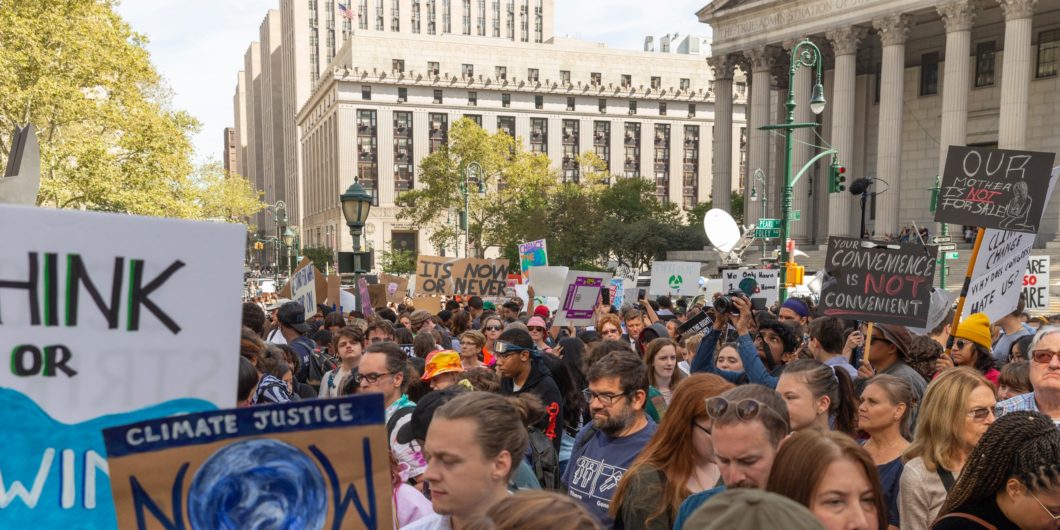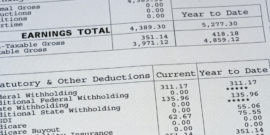It makes sense why stagnation rhetoric is so common, but the facts don't support it.
Environmental Law: Good Intentions, Bad Economics
Much of our contemporary political discourse is really a dispute over the past. This can easily be discerned by comparing Donald Trump’s “Make America Great Again” slogan to the “that’s not who we are” phrase repeated more than 40 times by President Barack Obama over the course of his eight-year presidency. Both slogans are loaded with nostalgia and suggest that something has been lost. But it is not always clear what exactly has been lost and whether it can be recovered.
One piece of the puzzle is America’s lack of economic dynamism when compared to our recent past. An increasing amount has been written on the slowdown in American innovation and economic vitality, especially compared to the “golden century” between 1870 and 1970 when automobiles and electricity entered our world. An even more dynamic “golden quarter-century” between 1945 and 1971 saw the invention or full development of the birth control pill, computer chips, the internet, television, the third agricultural revolution, antibiotics, and space travel.
Since roughly 1970, however, someone or something has pressed a pause button on the rate of innovation in the physical world. This transition is summed up by tech investor Peter Thiel’s complaint that “we wanted flying cars, instead we got 140 characters.”
Serious thinkers like Thiel, economist Tyler Cowen, and demographer Joel Kotkin have all highlighted how low-growth, no-growth, or “degrowth” policies are now at the center of economic discourse on the political left. All three see such economics as unsustainable within a democratic system. The growth slowdown and resulting income disparities are now accepted as part of the larger cause of the destabilizing politics in Europe, the United States, and other democracies throughout the world.
Environmentalism and Legal Standing
Given the unsettling consequences of such stagnation, it’s surprising how little attention has been given to its legal roots—namely the subtle transformation of American jurisprudence during the 1960s which lowered the barrier to citizen lawsuits against economic development that could cause, or threaten to cause, pollution.
This development, while largely obscured from public view, arose when appellate court judges took a legal innovation from civil rights law and implanted it into environmental law, where it became a primary tool for inhibiting economic growth in the United States.
One focal point for decreased economic growth over the past half-century has been the issue of legal standing, which asks whether a plaintiff has sufficient cause to come before a court. Judges at all levels of the U.S. court system must decide whether a plaintiff has legal standing before any one of the more than half-million cases filed each year can proceed.
As is often the case, this legal change started with the best of intentions before becoming co-opted. Two major Supreme Court decisions in the 1950s, Barrows v. Jackson (1953) and NAACP v. Alabama (1958), expanded the concept of standing to allow individuals or groups to vindicate the constitutional rights of third parties unable to do so themselves. In NAACP v. Alabama, the Supreme Court reversed a lower-court ruling requiring the NAACP to divulge its membership lists, which would have risked the lives of many of its members in the Deep South. Rather than requiring individual NAACP members to go to court themselves, as would have been the case under traditional standing rules, the Warren court agreed to recognize the NAACP’s standing as an organization, thereby permitting the NAACP to assert the rights of its members in court. The new standard has given rise to new legal terms like “organizational standing” and “vicarious standing,” both of which allow certain third parties the ability to try to vindicate the rights of non-litigants.
The decision to expand standing to better protect the rights of a historically persecuted minority helped further the goal of extending civil rights to African Americans. But several years later, a federal appellate court transferred the broadened doctrine of legal standing into environmental law.
In late December 1965, the Second Circuit Court of Appeals found that the Scenic Hudson Preservation Conference—an amalgam of environmental activists—had legal standing to sue the Federal Power Commission to stop construction of a hydropower facility north of New York City. Citing injury to “aesthetic or recreational values,” the Second Circuit expanded the definition of legal standing for plaintiffs, making it the first time a citizen—any citizen—had the right to bring an environmental dispute to court.
Over the next several years, in the wake of the final legislative victories of the civil rights movement in 1968 and the Santa Barbara oil spill of January 1969, modern environmentalism became “the spirit of the age.” By the beginning of 1970, this environmental “spirit” unleashed by the Scenic Hudson Preservation Conference v. Federal Power Commission decision was made corporal through the passage of the National Environmental Protection Act (NEPA), which incorporated the appellate court language in support of “aesthetically and culturally pleasing surroundings.”
This opening in the law to expand the “injury-in-fact” standing test to include “cultural-(dis)pleasing” behavior is one of the most consequential in U.S. economic history and was quickly supported by further court decisions. First, in Calvert Cliffs Coordinating Comm. v. AEC (D.C. Cir. 1971), a federal appeals court recognized the power of courts to review federal agency NEPA compliance, even in the absence of any agency-level rules regulating such compliance. The next year, the Supreme Court found in Sierra Club v. Morton (1972) that injury to a citizen’s interest in the environment was sufficient to confer legal standing to sue. Finally, Congress’ enactment of the Equal Access to Justice Act in 1981 bolstered citizen litigation under NEPA by allowing attorney fees to be awarded to nonprofit groups, such as environmental advocacy organizations that challenged government actions.
When asking what happened to the U.S. economy starting around 1970, one should look no further than the unintended influence of grafting civil rights standing onto environmental law.
Pursuit of Cleanliness
The migration of civil rights standing into environmental law is not without rationale, albeit for political and health reasons, not for constitutional ones. Oil spills, serious air pollution in many U.S. cities, dangerous chemicals like DDT, and polluted rivers all focused the public’s attention on the environment. The passage of laws such as the Clean Air Act of 1970 has accrued massive benefits to the public at large, measured both in lives saved and health care costs reduced.
But the transfer of third-party standing—a necessary innovation for civil rights—into the corpus of environmental law weakened the most industrialized parts of the U.S. economy. This change then led, inexorably, to a generational trend of offshoring jobs while undermining the social stability and upward mobility of the working- and underclasses—the very groups the civil rights movement was most interested in helping.
In 1978, President Jimmy Carter signed an Executive Order directing federal agencies to comply with NEPA regulations, something not intended by the legislation. Since that time, environmental advocates have filed more than 4,000 lawsuits for alleged NEPA violations. Additionally, court injunctions have delayed over 1,000 federal projects. Due to these legal burdens, NEPA compliance often imposes five years or more of delay on large federal projects and annually halts thousands of smaller actions for as much as two years, creating new, permanent opportunity costs that naturally drive away investment.
Given the increased scarcity of investments in transportation and manufacturing as a result of expanded legal standing to enforce environmental regulations, it is no wonder that U.S. innovation has moved away from the physical economy of manufacturing and commodities and toward financial services and the digital economy. This trend explains important drivers of the current populist moment and in particular the Trumpian opposition to ever-increasing environmental regulation.
A study of the negative influence of regulation on U.S. economic growth and job creation suggests that the increase of federal regulation cut the cumulative growth of U.S. gross domestic product by roughly 25 percent between 1980 and 2012 due to the regulatory distortion of investment choices that can lead to invention and innovation. While U.S. growth rates between 1960 and 1999 averaged over 3 percent, between 2000 and 2019 growth averaged only 2.1 percent. These figures do not capture the enormity of the opportunity costs to the U.S. economy, which was $4 trillion smaller at the end of this time period than it otherwise would have been, equaling a loss of $13,000 per capita for each citizen.
Perhaps more relevant to the current political moment is not economic growth lost, but the type of jobs not created over the course of the past 50 years.
Heavy industrial jobs in auto, steel, textile and furniture manufacturing, copper and nickel mining, and forest products were hardest hit, not coincidently because they created pollution. These same jobs were the entry points into the workforce for immigrants who successfully assimilated into industrializing American society in the 19th and early 20th centuries, yet they became increasingly scarce just as black Americans finally gained full legal access to the American economic system.
Over the course of the 1970s, lower global shipping costs, cheaper labor, and fewer environmental costs pushed manufacturing offshore. At the same time, black unemployment rose from 9 percent (in 1973) to 15 percent (in 1975), and the income gap between those with high-school and college education began to widen. Lower-income male employment rates and earning power began to lag behind those of previous decades—a trend that has continued almost uninterrupted until today.
Limits on the further expansion of legal standing later came with the Supreme Court decision Lujan v. Defenders of Wildlife (1992), but the issue of standing in environmental cases still tests the bounds of current jurisprudence.
Just in January, a panel of Ninth Circuit judges “reluctantly” ruled that 21 young people did not have standing to claim that the federal government was depriving them of their constitutional right to a livable climate. Arguments for such an enlargement of standing doctrine rest on the shoulders of the 1965 Scenic Hudson decision. The legitimacy of such arguments depends upon the idea that the intrinsic nature and value of environmental law are so similar to civil rights law that no real distinction can be made, and that the same social and cultural benefits will apply to the former as the latter. Yet the last half-century has shown the truth to be the exact opposite.


